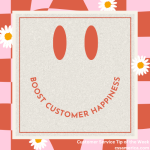They worked as a team…an individualized dysfunctional team. Let me know if you ever heard a story like this before.
Darla was just about the greatest sales rep ever. She could take someone from suspect to prospect to client literally in a matter of a few minutes or 2-3 conversations. Steven was the consummate professional when it came to customer service and client retention. He thrived in those 1-on-1 moments of truth, and he was strategic enough to nurture and grow relationships over time.
Darla and Steven hated each other. It wasn’t love-hate; it was more like respectful hate-hate. The way the business was organized, the sales rep made the sale, and then they’d turn the account over to service from that point forward. Darla only got commission off the initial sale, and she didn’t think that was fair since the organization earned thousands of dollars a year off renewals of contracts. She would actually earn more money if the client would cancel every year and sign a new contract with her the next day. “Why don’t I get compensated for future contracts that I started for the company?”, Darla would think.
Steven got evaluated and compensated on renewals, but he was always upset because Sales never obtained or shared the kind of information he needed to retain the new client, so he was essentially starting from scratch in relationship building with every new client. “Why can’t Sales think of anyone but themselves when they get a new client?”, Steven often wondered.
Darla and Steven were so good at what they did individually that they saw the shortcomings of the other very clearly.
This all-too-true story is about siloed organizations and misaligned incentives. If you want the organization to succeed, you have to incent staff to do what’s best for the long-term benefit of the customer and the WHOLE company – not just their own division or department.
Look at your incentives. Do they promote the department or the company? Do they focus on the short-term or long-term?
Ensure departments know how they impact each other – how their “output” is their co-worker’s “input.” Then incent long-term success.











